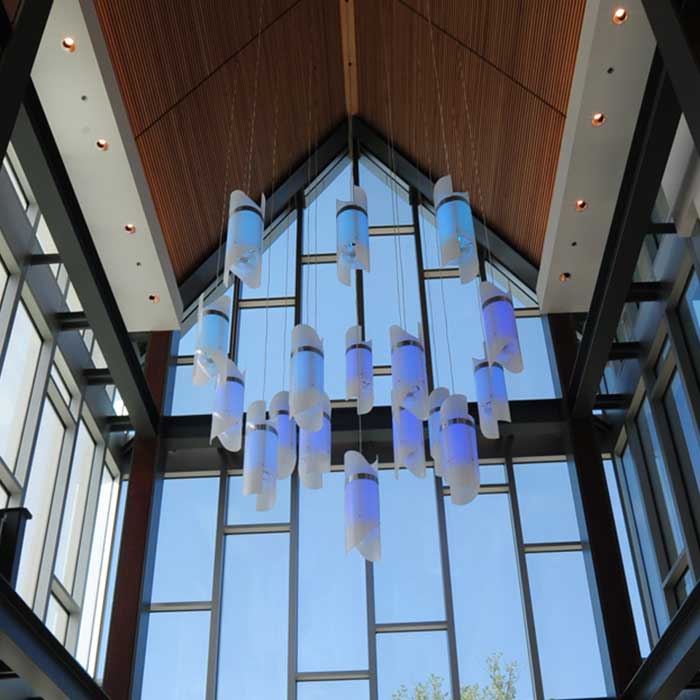
LED Lighting
The lighting fixtures at CLA are one of many projects to conserve energy on campus.
TU is a signatory of Second Nature's Carbon Commitment, pledging to reach carbon neutrality by 2050. To meet this commitment, the university has deployed energy conservation and procurement strategies to reduce the institution’s environment impact in a fiscally responsible manner.
With fewer people on campus over the summer, we’re adjusting building temperatures to conserve energy and lower costs. These efforts will save the university over $100,000 amidst state budget reductions. Unoccupied spaces on campus will be set to 76–80°F, including classrooms and residence halls.
In addition to these cost saving efforts, we want to remind you to:
These small actions add up and help our campus become a more sustainable and efficient place to live, work and learn.
From FY14 to FY20, TU saved $2.7 million through its Strategic Energy Procurement Plan while reducing carbon emissions more than 40 percent. The TU Energy Team proactively works to reduce the university's carbon footprint by tracking, managing, and limiting energy use on campus. This not only reduces the university's environmental impact but also minimizes utility costs.
TU has two main energy sources: electricity and natural gas. The Power Plant, which runs on natural gas, is comprised of a complex energy grid and a vast network of steam and chilled water pipelines.
Meters on campus help the Facilities Management team find trends and conservation opportunities in energy and water usage. The data also helps to identify leaks or other flaws within the energy or water infrastructure that may need to be addressed.
Since 2011, all new buildings and major renovations on campus are constructed to LEED Silver standards at minimum. To date, TU has completed over 90 energy efficiency projects that qualified for utility incentives totaling over $2.5 million through BGE’s Energy Saver’s Rebate Program. TU continues to prioritize energy conservation through its commitment to the Department of Energy's Better Buildings Challenge.
Towson University's annual energy use of electricity is 75M kWh. Its annual use of natural gas is 2.5M Therms.
TU's two sources of energy are electricity and natural gas. In addition, the university currently purchases 60 percent renewable energy.
TU has 4,000 solar panels on the rooftops of Barton and Douglass Houses, General Services, University Union and Union Garage. These five solar arrays on campus produce over 1.5 MWh a year.
In the world of energy, "CHP" stands for "combined heat and power." Learn more about CHP on the Environmental Protection Agency's (EPA's) website.
The Office of Energy has been developing fiscally and environmentally responsible conservation strategies since its inception in 2011. Some of these strategies include participating in rebate programs, replacing inefficient and outdated fixtures, monitoring metered data, and optimizing temperature set points for buildings.
TU's Office of Energy reports its energy savings to the state of Maryland on a yearly basis. You can find the report for FY2020 here.